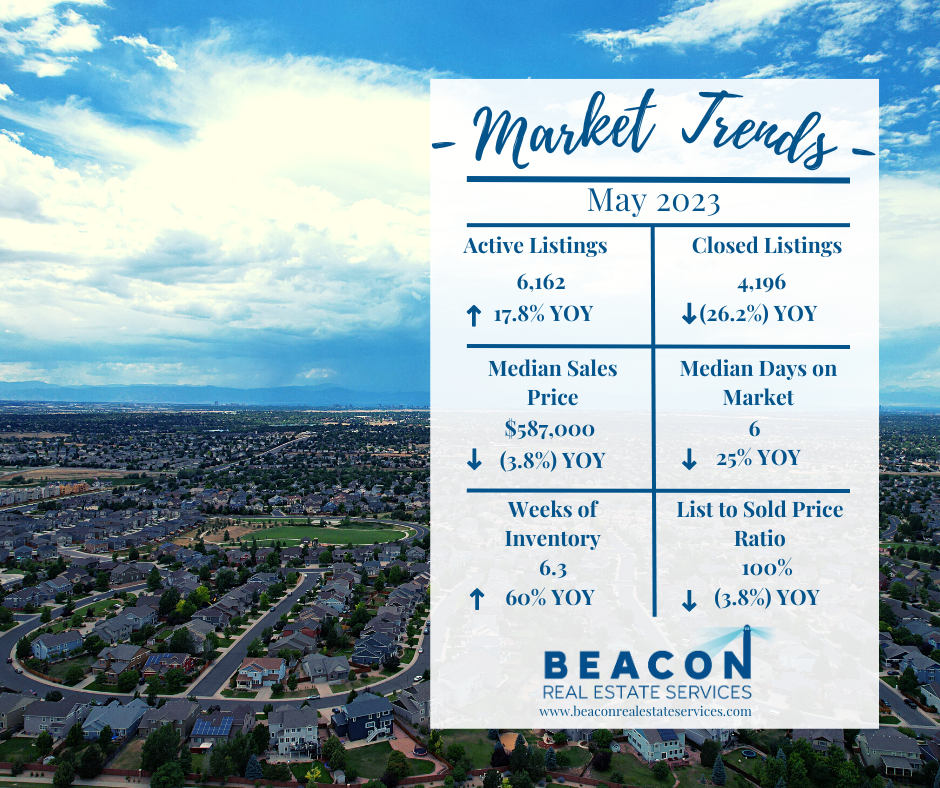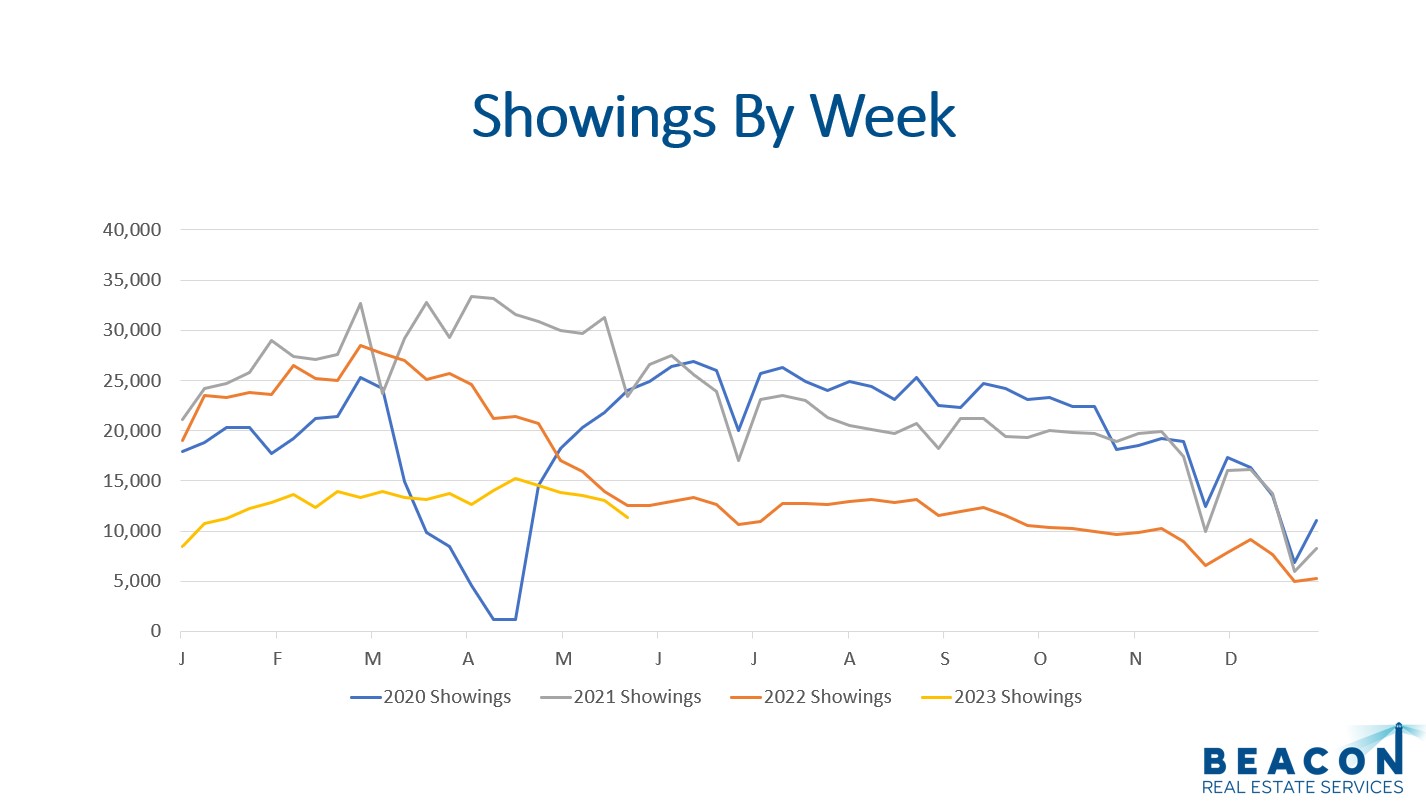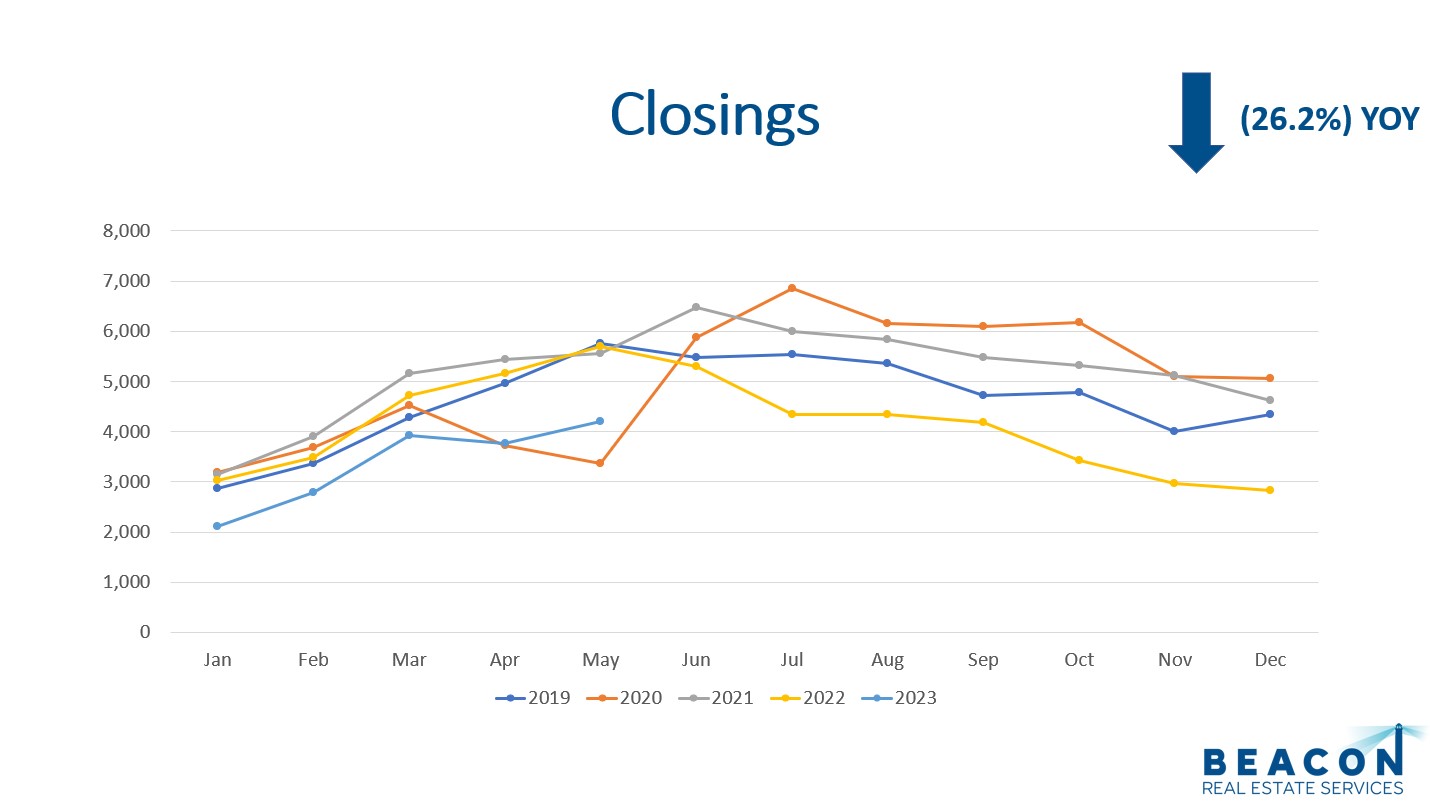
The Denver residential real estate market is picking up steam! Even though interest rates are high, low inventory is helping to push prices higher! The 10-year average for new listings is 7,260 for the month of May, but we only saw 5,494 new listings last month. This helped push the months of inventory back to one month. Mortgage interest rates with a 30-year term ended April at 6.57%. Let’s dive into the key market data for the Denver residential real estate market to see what is happening with supply, demand, sales prices, and months of Inventory for May 2023.
Supply
In May we had 5,494 new listings hit the market! This is up from April by 8.2% but very close to March. Unfortunately, this is down (20.3%) compared to May 2022.

The total amount of active listings at the end of the month was 6,162. This is up 17.8% from May 2022 but last year had record low inventory. The 10-year May average from 2013 to 2022 is 8,036 listings, so we are below our long-term average.
The most recent report for detached home construction starts is April 2023. The Denver Metropolitan Statistical Area (MSA) pulled permits on 660 homes. This is lower than the three year average of 1,120 for April. Year to date construction starts for 2023 compared to the same period in 2022 shows a (45.6%) decline.
All in all, the supply is in a better position compared to 2021 and 2022 but is still lower than 2019 and 2020.
Demand
Showings are a great leading indicator for demand in the residential real estate market. There were 53,584 showings booked through the largest showing service in the Denver metro area during May.
This is down (19%) when compared to May 2022 and down (14.2%) compared to April 2022. The average amount of showings for May, over the last four years, is 97,141.

Denver had 4,292 properties go under contract in May 2023. This is up 3% compared to April but is down (22.5%) compared to May 2022.
There were 4,196 closings in May 2023 compared to 3,764 in April 2023. This is a 11.5 increase over April 2023. A year ago, we had 5,689 closings in May so the volume of closings is down (26.2%) YOY.

The median days on market for May 2023 dropped to 6 days from 8 days in April. This is another encouraging sign for the residential market! This means half of the properties listed are under contract in 6 days or less.
The list price to close price ratio held steady at 100%, so sellers are generally getting what they are asking. With that said, I have seen homes that are over priced sit on the market for a long time.
All in all, demand for housing is soft when we look at showings but decent when we look at closings. Let’s look at the median sales price.
Sales Prices
The median sales price has increased every month this year after falling at the end of last year. May increased to $587,000 from $575,000. This metric includes detached and attached properties. The median price increased 2.1% over April and is now only down (3.8%) from May 2022.

The long-term average appreciation for residential real estate is 6%. Higher prices and higher interest rates will continue to temper appreciation in the short run. Tight inventory is helping to prop up the market.
Although prices are down from last year, we are encouraged to see the median price increasing as we roll through the spring selling season.
Let’s look at months of inventory now.
Months of Inventory
The months of inventory is a great indicator to watch for market trends. Typically, a seller’s market has 0-3 months of inventory. A balanced market has 4-6 months of inventory, and 7+ months of inventory is a buyer’s market. In a seller’s market prices go up. In a buyer’s market prices go down.

With 6,162 listings on the market and 4,196 closings, the months of inventory dropped to 1.5 months or 6.3 weeks of inventory. Therefore, the inventory is still low when compared to the demand. We expect the months of inventory to continue to be low this year.
All in all, months of inventory is a great metric to watch.
Final Thoughts
In conclusion, supply, demand, median sales price, and months of inventory are ideal key performance indicators to watch for market trends. Supply is higher than the record lows of 2021 and 2022 but is still lower than the long-term average. Demand was higher in May compared to April from a closings standpoint but showings are still soft. Lastly, 1.5 months of inventory still puts sellers in the driver’s seat.
Here is a link to the full presentation: